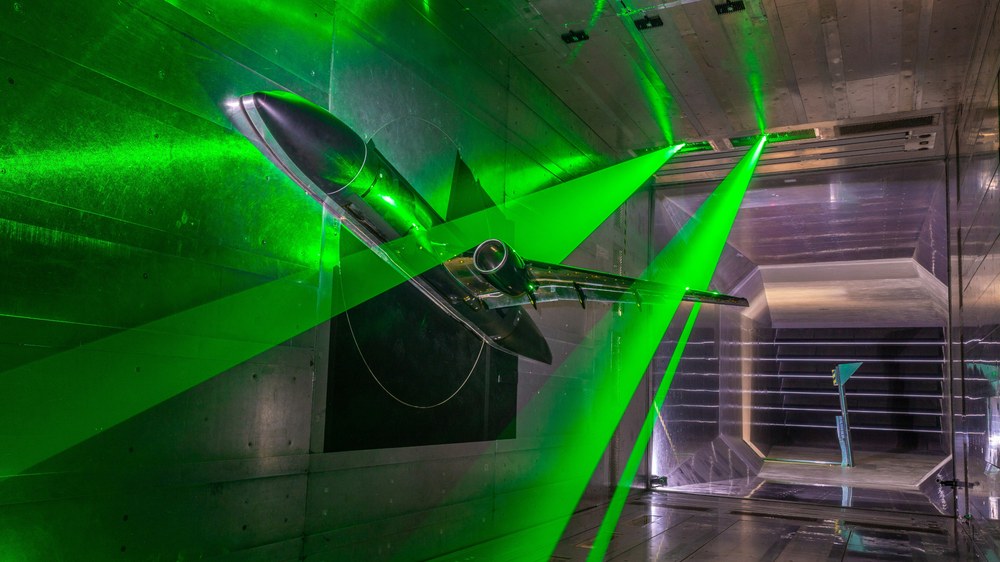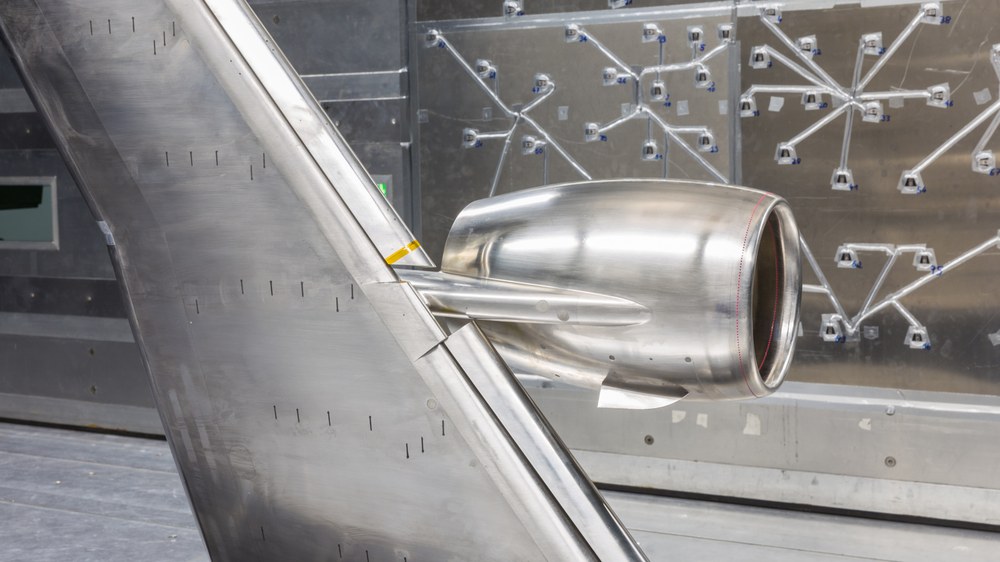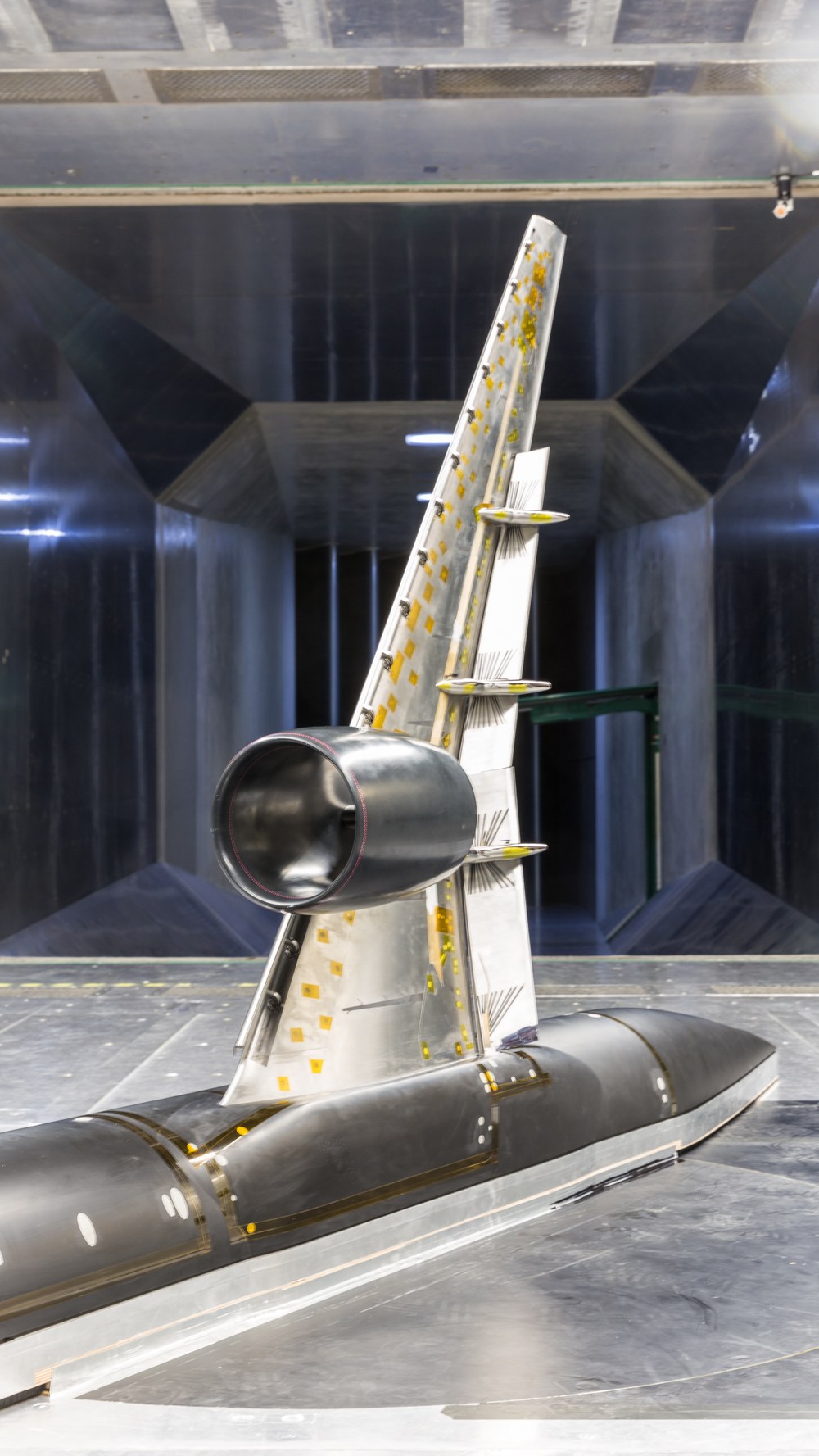DLR improves the prediction of flight characteristics for future aircraft



- In future, it will be possible to predict the flight envelope of an aircraft with greater precision.
- DLR researchers have optimised the relevant prediction techniques.
- Focus: Aeronautics, digitalisation, climate-friendly flight
In wind-tunnel tests, the German Aerospace Center (Deutsches Zentrum für Luft- und Raumfahrt; DLR) has investigated the lift generated by commercial aircraft using state-of-the-art measurement and simulation technologies. The findings will help to predict the characteristics of future aircraft much more accurately than before, in order to make them quieter, more efficient and more environmentally friendly.
The development of a new aircraft is a lengthy and complex process. An interaction between computer simulations and wind tunnel experiments takes place long before construction and the first flight. "Highly accurate simulations of the airflow around an aircraft are necessary to accurately and reliably predict the aerodynamics and thus the flight envelope of current and future aircraft configurations," says Project Coordinator Cornelia Grabe of the DLR Institute of Aerodynamics and Flow Technology in Göttingen. The same applies to identifying the safe operating range of the engines. The DLR 'Adaptive Data-driven Physical Modelling towards Border of Envelope Applications' (ADaMant) project aims to develop and demonstrate computer models for such high-precision flow simulations.
Joint endeavour by DLR and NASA
DLR and NASA worked together to carry out tests at the Braunschweig Low-Speed Wind Tunnel (Niedergeschwindigkeits-Windkanal Braunschweig; NWB), operated by German-Dutch Wind Tunnels (DNW), using an internationally recognised research model of a commercial aircraft provided by the US National Aeronautics and Space Administration (NASA). Tests with the same model are being repeated in NASA's own wind tunnel, in order to acquire a better understanding of how the use of different wind tunnels affects the resulting measurement data. The airflow around the research model in free flight was examined in the flow simulation, and the wind tunnel was also modelled. The aim was to investigate the extent to which the wind tunnel influences the flow around an aircraft model. This knowledge will make computer simulations and wind tunnel experiments more comparable.
The challenge of turbulent flows
The greatest challenge in the computer modelling of aerodynamic processes is turbulent flows. They require sophisticated computational methods to find a balance between precision and efficiency. While precision is essential to reliably predict the flight envelope of an aircraft or the operating range of an engine, the use of resources such as computing time on supercomputers needs to be reduced to the minimum necessary for such simulations.
In the ADaMant project, researchers examined computer models with varying degrees of precision and evaluated them with regard to their suitability both for simulating the airflow around an aircraft's exterior under specific flight conditions and for simulating certain operating ranges of an engine. Ultimately, the knowledge gained should help to improve the computer models used to design and simulate the flight characteristics of future aircraft and engines. This will support and accelerate the development of more efficient and environmentally friendly aircraft.
The wind tunnel tests took place inside DNW's Braunschweig Low-Speed Wind Tunnel. The calculations were carried out using DLR's CARO supercomputer in Göttingen. Six DLR institutes and facilities are involved in the project:
